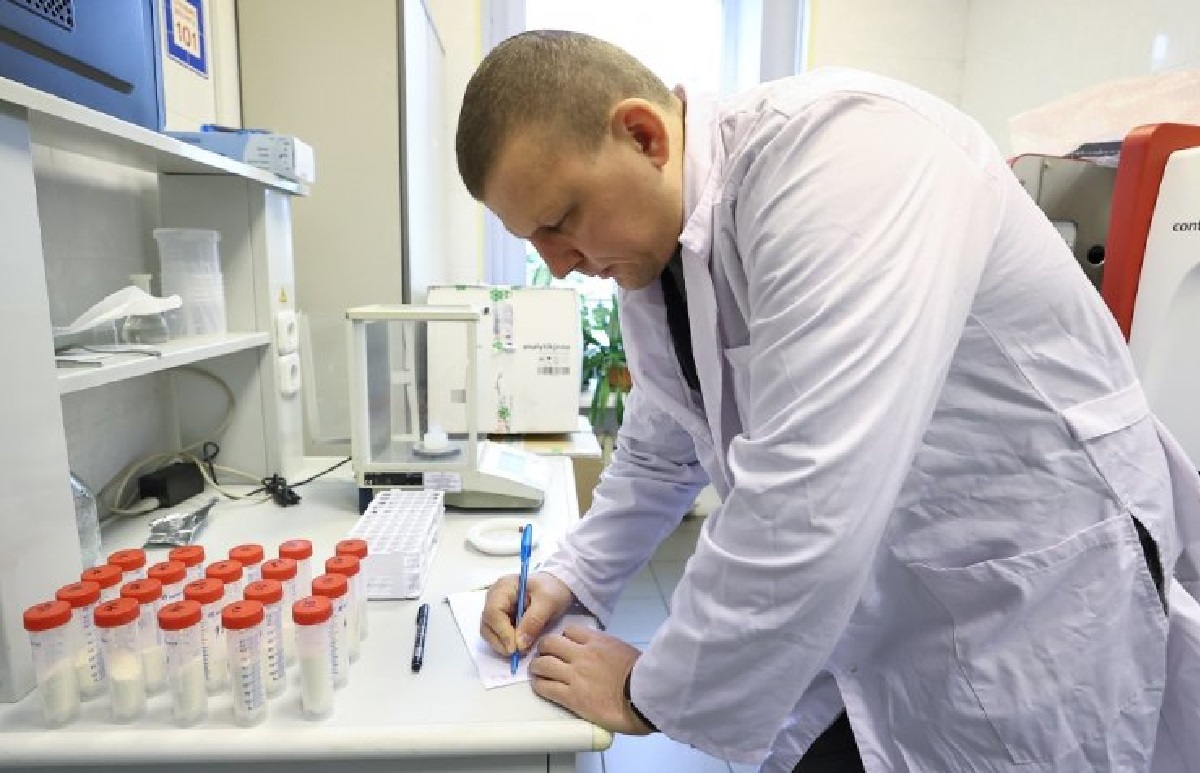Russia invents method to defeat chronic hepatitis B
- Update Time : Friday, August 2, 2024

Scientists at Sechenov University of the Russian Ministry of Health have come close to creating a drug that will cure chronic hepatitis B, which is one of the most dangerous infections. Hepatitis viruses affect the liver, leading to cirrhosis and cancer. Dmitry Kostyushev, head of the laboratory of genetic technologies in the creation of drugs at Sechenov University, told Rossiyskaya Gazeta about the problems of existing therapy, approaches to creating innovative antiviral drugs and the mechanism of their work.
Why is it necessary to develop new antiviral drugs?
Dmitry Kostyushev: The drugs used today cannot completely clear the cells of the virus, but they make it less active, thereby reducing liver damage and the risk of developing cirrhosis and cancer. But these drugs have to be taken for many years, most likely for life, and liver disease can still develop. This is where the problem arises. Some patients reason like this: I don’t have jaundice or other symptoms, I feel fine, the drug won’t cure me completely anyway, so why take it if everything will be fine anyway? It won’t.
Without such containment, the virus will continue to actively destroy the liver, ultimately leading to cirrhosis and liver cancer.
Currently, approximately every 12th person in the world is infected with one or another hepatitis virus, and most often we are talking about the hepatitis B virus. According to the WHO, about 350 million people in the world have chronic hepatitis caused by it, and more than 500 million are in contact with patients and risk becoming infected. The disease is deadly: 800 thousand, and according to some estimates, up to a million people per year die from the consequences of chronic hepatitis B. Even in the early stages of liver cancer, the five-year survival rate is only 37%. If metastases have already appeared, it is only 4%.
Therefore, it is necessary not only to strengthen prevention, vaccinate people all over the world, but also to have medicines to treat those who are already infected. This is the only way to get rid of the hepatitis B virus completely.
How are drugs developed to treat chronic hepatitis B?
Dmitry Kostyushev: There are three main approaches. The first is testing numerous combinations of existing drugs. This can improve the clinical course of the disease, but it will not completely eliminate the disease. The second approach, the most common, is blocking the activity of the virus. Viral DNA remains in the cell, but the virus can stop reproducing.
Finally, the third option is direct intervention in the viral genome with the purpose of its removal. We are working in our laboratory in the third direction, and here we can say with some pride that we are ahead in many respects compared to our competitors in the world.
What is the drug developed in your laboratory?
Dmitry Kostyushev: We have created a molecular tool for eliminating the virus. It has demonstrated high efficiency in cell cultures and mouse models. But molecular tools are very difficult to deliver to cells, so we have also developed a system for delivering these tools specifically to the affected organs.
During our work, we found out that even if the viral genome is destroyed, it can be restored through additional mechanisms. Therefore, we determined the most effective treatment tactics: first, we need to use standard therapy to reduce the activity of the virus to a minimum, and then use our drug to completely remove it from the cells.
Hepatitis B drugs are difficult to test because the animals that are usually used for such experiments do not get sick. So, we also created a suitable mouse model – mice with an altered genome that can become infected and get sick with hepatitis B just like people. This will allow us not only to test our own developments, but also to help pharmaceutical companies that are also working on creating a hepatitis B drug.
Will the new drug be able to be used to treat other types of viral hepatitis?
Dmitry Kostyushev: No, because these viruses are united only by their name – they all belong to different families, protect themselves from the immune system in different ways, and they also require different methods of action. For example, hepatitis A in the vast majority of cases successfully goes away on its own and does not cause chronic liver diseases, and there are already many effective drugs for hepatitis C. In Russia, including thanks to the state program of free treatment of hepatitis C, the number of chronic patients is constantly decreasing, and we have every chance to completely eradicate the problem of chronic hepatitis C, very serious work is underway in this direction.
But indirectly, the new drug will protect against hepatitis D. Infection with this virus is possible only when the patient already has chronic hepatitis B; healthy people do not become infected. At the same time, the addition of hepatitis D greatly complicates the course of hepatitis B and leads much faster to severe liver damage – only about half of carriers of the hepatitis B and D viruses live more than five years. Therefore, ridding the patient of hepatitis B will also protect him from the consequences of infection with hepatitis D.
Rossiyskaya Gazeta

















